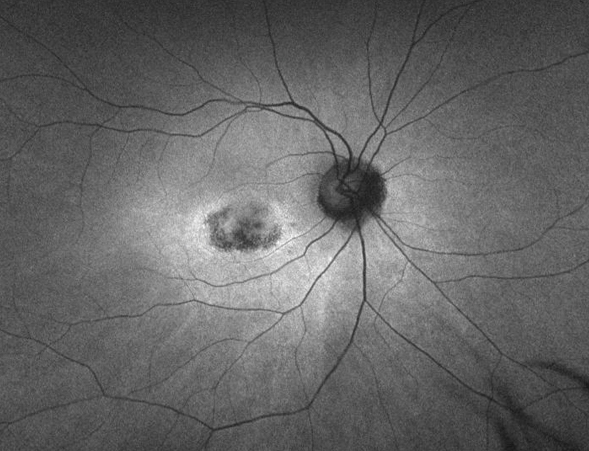 |
|
Plaquenil-induced retinopathy causes several inner-retinal parameters to alter. Photo: Luanne Chubb, OD. Click image to enlarge. |
A recent cross-sectional, case-control comparison study sought to better understand macular ganglion cell complex and peripapillary retinal nerve fiber layer (RNFL) thicknesses among patients with hydroxychloroquine retinopathy of varying severity. In eyes with severe hydroxychloroquine retinopathy, the data showed that macular ganglion cell complex and peripapillary RNFL thinning was more prominent.
In this study, eyes with hydroxychloroquine retinopathy were divided into early, moderate and severe stages. The researchers used swept-source OCT to obtain inner-retinal thickness parameters, including macular ganglion cell complex and peripapillary RNFL thicknesses. Both factors were then compared between patients with and without retinopathy as well as among severity subgroups.
The investigators included 66 patients with retinopathy and 66 without retinopathy by 1:1 propensity score-matching based on age, sex, systemic disease, history of tamoxifen and pentosan use and kidney disease.
The findings showed that the average macular ganglion cell complex and peripapillary RNFL thicknesses were significantly decreased among patients with hydroxychloroquine retinopathy vs. those without retinopathy. The study authors reported a significant difference between the two groups when it came to macular ganglion cell complex thicknesses in four of six macular sectors and peripapillary RNFL thicknesses in nine of 12 clock-hour sectors.
Additional data revealed a statistically significant difference in the average and sectoral macular ganglion cell complex parameters among the severity subgroups, especially between severe and earlier stages. In all patients, the study authors observed that average macular ganglion cell complex and peripapillary RNFL thicknesses were significantly correlated with mean deviation and visual field index.
“This study examined comprehensive profiles of inner-retinal changes in eyes with hydroxychloroquine retinopathy and determined that the changes were severity-dependent,” the study authors noted in their paper. “Careful investigation and monitoring of inner-retinal changes in eyes with advanced hydroxychloroquine retinopathy should be done, as this may contribute to structural degeneration in the whole retina and functional deterioration that cannot be accounted for by outer-retinal damage only.”
Want a refresher on Plaquenil toxicity? Read this: https://www.reviewofoptometry.com/article/plaquenil-toxicity-how-to-avoid-this-bullseye. |
Kim KE, Kim YH, Kim J, et al. Macular ganglion cell complex and peripapillary retinal nerve fiber layer thicknesses in hydroxychloroquine retinopathy. Am J Ophthalmol. August 10, 2022. [Epub ahead of print]. |


